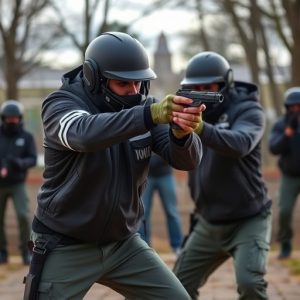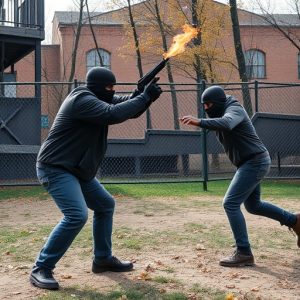Optimizing Stun Gun Effectiveness: Electrode Spacing and Self-Defense Guns
The effectiveness of stun guns is significantly influenced by electrode spacing, which determines th…….
The effectiveness of stun guns is significantly influenced by electrode spacing, which determines the power and precision of shocks delivered. Best-rated stun guns for self-defense should have well-spaced electrodes to maximize immobilization while minimizing collateral damage. Advanced circuitry allows users to adjust intensity levels, enhancing versatility and reliability. Testing by law enforcement and individuals ensures optimal electrode design that balances power and safety. Prioritizing safety through proper handling, training, and responsible ownership is crucial for effective and safe use of best-rated stun guns for self-defense.
Stun guns, a popular choice for personal safety, rely on strategic electrode spacing for maximum effectiveness. This article delves into the science behind stun gun electrode placement, exploring how distance and design impact stun performance. We examine factors influencing optimal electrode spacing, analyze best-rated stun guns on the market, and test real-world applications to ensure their reliability in self-defense scenarios. Additionally, we discuss responsible usage guidelines for safe and effective deployment of these devices.
- Understanding Stun Gun Electrode Spacing: Key to Effectiveness
- Factors Influencing Optimal Electrode Placement
- Best-Rated Stun Guns: A Closer Look at Their Design and Electrodes
- Real-World Applications: Testing Stun Gun Performance
- Safety Considerations: Using Stun Guns Responsibly
Understanding Stun Gun Electrode Spacing: Key to Effectiveness
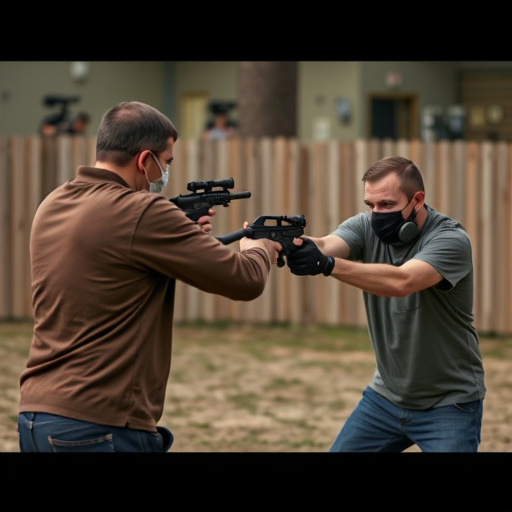
The effectiveness of a stun gun largely depends on its electrode spacing, which plays a crucial role in delivering a powerful and precise shock to an assailant. Stun guns with optimally designed electrodes can disrupt muscle control, causing the target to experience temporary incapacitation. This is especially important for self-defense scenarios where quick and effective intervention is key.
When considering best-rated stun guns for self-defense, electrode spacing should be at the top of your list. Narrower electrode gaps generally result in more concentrated electric fields, increasing the likelihood of a successful stun. However, it’s not just about size; electrode placement and material quality also contribute to overall performance. Ensuring the stun gun you choose has well-spaced electrodes will provide you with the best chance at neutralizing an attacker quickly and safely.
Factors Influencing Optimal Electrode Placement
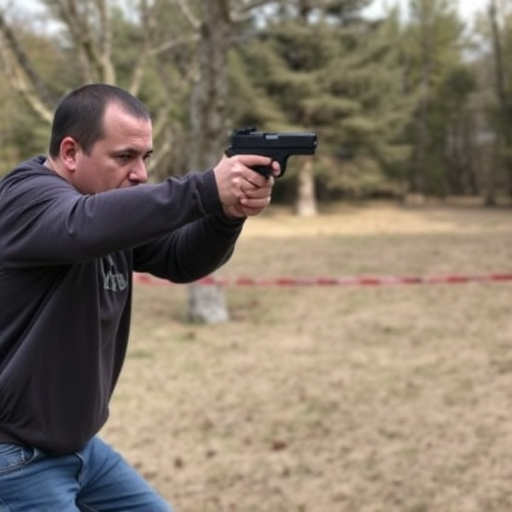
Optimal electrode placement in best-rated stun guns for self-defense is a critical factor determining effectiveness. Several key elements influence this precise positioning, ensuring maximum impact on the target. First and foremost, the size and shape of the electrodes play a significant role; larger surface areas facilitate better electrical conduction, enhancing the stun effect. Additionally, electrode spacing must be precisely calculated to deliver the right amount of current flow, balancing between profound shock and minimizing collateral damage.
The location on the body where the stun gun is applied also matters. Targeting nerve centers or muscle groups can amplify the stun’s intensity. Moreover, factors like target’s body composition (muscle density vs. fat) and physical attributes (body size and posture) can affect how the current distributes, necessitating adjustments in electrode placement for optimal results when using top-rated self-defense stun guns.
Best-Rated Stun Guns: A Closer Look at Their Design and Electrodes

When it comes to choosing the best-rated stun guns for self-defense, design and electrode spacing play a crucial role in their effectiveness. Top-tier stun guns often feature well-designed handles that accommodate larger electrodes, ensuring optimal current distribution. This not only enhances the stun’s impact but also improves safety by minimizing the risk of accidental discharge.
The best models prioritize user comfort and control, integrating advanced circuitry to regulate the electric flow. These sophisticated systems allow users to adjust the intensity level according to their needs, making them ideal for various self-defense scenarios. Electrodes that are strategically placed and spaced apart efficiently deliver a powerful shock, rendering an attacker temporarily immobilized. This design feature, combined with a robust construction, makes these stun guns reliable companions for personal safety.
Real-World Applications: Testing Stun Gun Performance
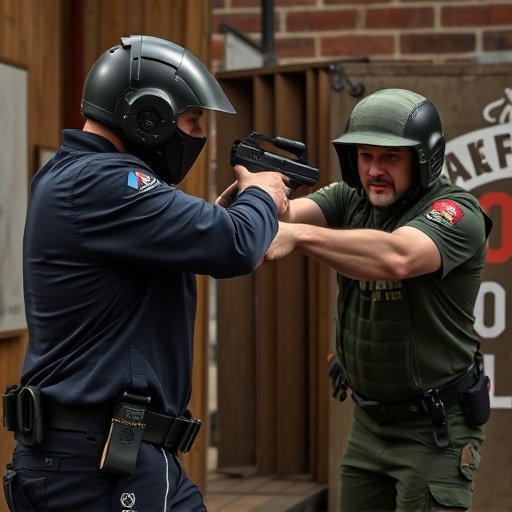
In real-world applications, testing the performance of stun guns is essential to ensure their effectiveness as self-defense tools. Law enforcement agencies and individuals alike often conduct rigorous evaluations to determine the optimal electrode spacing for stun guns. These tests involve subjecting the devices to various scenarios, simulating attacks, and measuring the stun gun’s ability to immobilize assailants. The best-rated stun guns for self-defense are those that consistently demonstrate reliable performance in these tests.
Electrode spacing plays a significant role in the stun gun’s effectiveness. Narrower electrode gaps generally deliver higher electrical current, resulting in faster muscle contraction and quicker incapacitation. However, proper spacing is crucial to ensure safety and avoid excessive damage to surrounding tissue. Through controlled experiments, manufacturers can optimize electrode design, providing users with powerful self-defense options while minimizing potential risks.
Safety Considerations: Using Stun Guns Responsibly
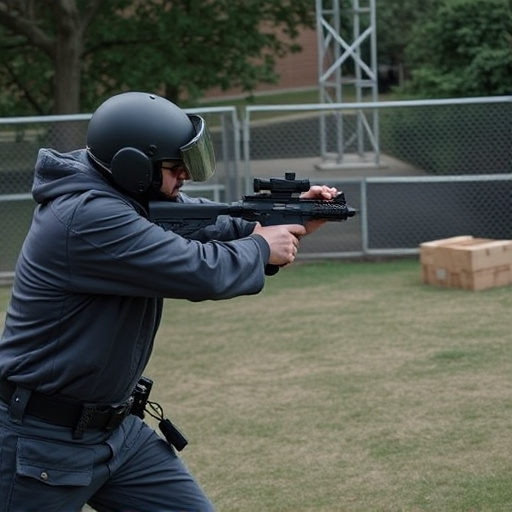
When considering the best-rated stun guns for self-defense, it’s crucial to prioritize safety above all else. Stun guns emit an electric current designed to disrupt muscle control in an assailant, but improper use can lead to adverse effects on both the user and bystanders. Always follow manufacturer guidelines and ensure you understand the device’s range, power settings, and any safety features like automatic shut-off mechanisms.
Regular training is essential, especially for individuals carrying a stun gun for self-defense. Knowing how to activate, aim, and use the device effectively while minimizing risk is vital. Additionally, keeping stun guns out of reach of children and storing them safely can help prevent accidental activations or misuse. Responsible ownership and handling are key to making sure these powerful tools serve their intended purpose without causing harm.
When it comes to choosing the best-rated stun guns for self-defense, understanding electrode spacing and optimal placement is key. This article has explored the factors influencing these considerations, highlighting the importance of proper design and real-world testing. By navigating the various options available, users can make informed decisions, ensuring their safety and peace of mind. Remember, responsible use involves understanding not just the weapon, but also the science behind its effectiveness.
